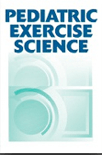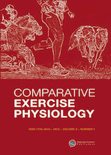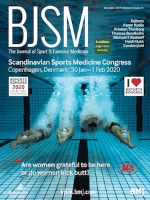
PEDIATRIC EXERCISE SCIENCE
Scope & Guideline
Transforming knowledge into action for youthful athletes.
Introduction
Aims and Scopes
- Physical Activity and Health Outcomes:
Research exploring the relationships between physical activity levels and various health outcomes, including cardiovascular health, metabolic syndrome, and overall fitness in children and adolescents. - Motor Skill Development:
Studies on the development and improvement of motor skills in young populations, emphasizing interventions and their effectiveness in enhancing physical competence. - Exercise Interventions and Programs:
Evaluation of structured exercise programs and their impacts on specific populations, including those with chronic illnesses or disabilities, highlighting efficacy and safety. - Psychosocial Aspects of Exercise:
Examination of the psychological benefits of physical activity, including self-esteem, social skills, and overall mental health in youth. - Biomechanics and Physiology of Pediatric Exercise:
Investigations into the physiological responses and biomechanical factors influencing exercise performance in youth athletes, including growth and maturation effects. - Sedentary Behavior and Its Impacts:
Research focused on the implications of sedentary behavior on health and development, including strategies to mitigate inactivity in children and adolescents.
Trending and Emerging
- Holistic Approaches to Physical Activity:
Emerging research emphasizes a holistic view of physical activity, integrating physical, cognitive, and emotional aspects, particularly in interventions aimed at children with chronic conditions. - Technology and Fitness Tracking:
There is a growing trend in the use of technology, such as fitness trackers and mobile applications, to monitor physical activity and promote engagement among children and adolescents. - Impact of Socioeconomic Factors on Physical Activity:
Increasing attention is being paid to how socioeconomic status influences physical activity levels and health outcomes in youth, highlighting disparities and informing targeted interventions. - Interdisciplinary Approaches to Pediatric Health:
Studies are increasingly adopting interdisciplinary approaches that combine exercise science with nutrition, psychology, and education to promote comprehensive health strategies for children. - Physical Activity in Special Populations:
Research focused on the role of physical activity in special populations, such as children with disabilities or chronic illnesses, is emerging as a significant area of interest, aiming to improve accessibility and inclusivity.
Declining or Waning
- Traditional Resistance Training:
There has been a noticeable decline in studies specifically targeting traditional resistance training methods in pediatric populations, possibly due to a shift towards more integrated and varied exercise modalities. - Single-Sport Specialization:
Research focusing exclusively on the impacts of single-sport specialization is decreasing, as there is a growing emphasis on multi-sport participation and its benefits for overall development. - Generalized Exercise Recommendations:
The focus on broad, generalized exercise recommendations is waning in favor of more tailored, individualized approaches that consider specific health conditions and personal characteristics.
Similar Journals

MEDICINA DELLO SPORT
Championing Scholarly Insights in Sports MedicineMEDICINA DELLO SPORT is a distinguished journal published by EDIZIONI MINERVA MEDICA, dedicated to advancing knowledge in orthopedics, sports medicine, and physical therapy. With its ISSN 0025-7826 and E-ISSN 1827-1863, this journal has been a pivotal platform for scholarly research since its inception in 1965, enhancing the understanding of various aspects of sports health and rehabilitation. Although it currently does not offer open access, it maintains a reputable stance in academic publishing, ranking in Q3 for both Orthopedics and Sports Medicine as well as Physical Therapy, Sports Therapy, and Rehabilitation, according to the latest metrics. With its inclusion in Scopus and a strong presence in important health professions, MEDICINA DELLO SPORT is crucial for researchers, professionals, and students aiming to explore and contribute to the evolving field of sports medicine and therapies. It is published from its headquarters located at CORSO BRAMANTE 83-85 INT JOURNALS DEPT., 10126 TURIN, ITALY, ensuring a European perspective in global health discussions.

Comparative Exercise Physiology
Pioneering Discoveries in Exercise Across SpeciesComparative Exercise Physiology is a peer-reviewed journal published by Wageningen Academic Publishers focused on advancing the scientific understanding of exercise physiology across various species and contexts. With its ISSN 1755-2540 and E-ISSN 1755-2559, it serves as a vital platform for disseminating research findings that bridge the gap between exercise science and comparative physiology, enriching the fields of biochemistry, biophysics, and sports medicine. The journal holds a notable position in the academic landscape, with a Q4 ranking in multiple categories and a commendable Q3 ranking in Orthopedics and Sports Medicine, highlighting its relevance and contribution to these domains. Although it operates without an Open Access model, the journal remains committed to providing well-researched and insightful articles that appeal to a diverse audience of researchers, professionals, and students aiming to enhance their knowledge and application of exercise physiology in both human and veterinary contexts. By fostering interdisciplinary dialogue and offering comprehensive insights, Comparative Exercise Physiology plays a crucial role in the pursuit of knowledge in the ever-evolving field of exercise science.

BRITISH JOURNAL OF SPORTS MEDICINE
Empowering Professionals with Premier Research and ReviewsBritish Journal of Sports Medicine (BJSM) is a premier academic journal that stands at the nexus of sports science and medicine, dedicated to advancing the understanding and practice of sports health. Published by the BMJ Publishing Group, this esteemed journal has been delivering high-quality, peer-reviewed research since its inception in 1964 and continues to be a crucial resource for professionals and researchers in the fields of orthopedics, sports medicine, and rehabilitation. With an impressive impact factor and consistently ranked in the Q1 category across multiple relevant disciplines according to the latest metrics, BJSM is a vital platform that disseminates essential findings that shape clinical practice and influence policy. Located in the heart of London, UK, it provides unrestricted access to groundbreaking research, critiques, and reviews that address the latest challenges in sports health. Whether you are a seasoned researcher, a budding sports medicine professional, or a dedicated student, the British Journal of Sports Medicine is your go-to source for the latest advances and insights in the ever-evolving landscape of sports health and performance.

Translational Journal of the American College of Sports Medicine
Innovating Sports Therapy for Enhanced Patient Care.Translational Journal of the American College of Sports Medicine is a pivotal publication dedicated to advancing the field of sports medicine and rehabilitation. Published by LIPPINCOTT WILLIAMS & WILKINS, this journal serves as an essential platform for researchers, practitioners, and students keen on the latest innovative research and clinical practices. With a particular focus on orthopedics and sports therapy, this journal aims to bridge the gap between research and practical application, promoting improved patient outcomes in physical therapy and rehabilitation settings. The journal positions itself as a thought leader within its field, evidenced by its respectable Q2 quartile ranking in Physical Therapy and Rehabilitation and Q3 ranking in Orthopedics and Sports Medicine as of 2023. Although not an open-access publication, the journal remains committed to disseminating high-quality, peer-reviewed articles that inspire new methodologies and evidence-based practices. Historically converging from 2021 to 2024, the journal continues to garner attention in both the academic community and clinical practice, highlighting its significance as a resource for contemporary sports medicine. Researchers are encouraged to submit their work to contribute to this vibrant and growing area of study.

Applied Physiology Nutrition and Metabolism
Shaping the Future of Nutrition and PhysiologyApplied Physiology, Nutrition, and Metabolism is a renowned journal published by Canadian Science Publishing, focusing on the interdisciplinary fields of physiology, nutrition, and metabolic science. Since its inception in 2006, this journal has established itself as a leading source of cutting-edge research, providing a platform for innovative studies that impact clinical practices, fitness, and health guidelines. With an impressive recognition within the academic community, it boasts a Q1 rank in Nutrition and Dietetics and Q2 ranks in Endocrinology, Diabetes and Metabolism, and Physiology categories in 2023, highlighting its significance in advancing knowledge in these critical areas. The journal offers open access options, promoting broader dissemination of research findings to enhance global health outcomes. Situated in Canada, Applied Physiology, Nutrition, and Metabolism aims to integrate science and practical applications, making it essential reading for researchers, clinicians, and students dedicated to exploring the dynamic interactions between nutrition, physical activity, and metabolic health.

MHSalud-Revista en Ciencias del Movimiento Humano y la Salud
Championing accessible research for a thriving academic community.MHSalud-Revista en Ciencias del Movimiento Humano y la Salud is a prominent open-access journal published by the UNIV NAC, ESCUELA CIENCIAS DEPORTE in Costa Rica since 2004, dedicated to advancing research in the fields of human movement sciences and health. With an ISSN of 1659-097X, this journal serves as a vital platform for the dissemination of innovative findings related to biomechanics, rehabilitation, sports medicine, and public health. Although it currently holds a Q4 classification across various relevant categories such as Biophysics and Orthopedics, the journal is committed to fostering scholarly communication and bridging the gap between research and practice in these critical areas. The accessible nature of its content allows both seasoned researchers and emerging scholars to engage with research findings, while its focus on diverse health topics ensures its relevance in a rapidly changing academic landscape. As the journal continues to evolve through 2024 and beyond, it remains a crucial resource for professionals, students, and academics aiming to contribute to the understanding and improvement of human health and movement.

Journal of Exercise Rehabilitation
Fostering Global Collaboration in Exercise RehabilitationThe Journal of Exercise Rehabilitation is a leading academic publication dedicated to advancing the field of physical therapy, sports therapy, and rehabilitation. Published by the Korean Society of Exercise Rehabilitation, this open-access journal, available since 2013, facilitates the dissemination of high-quality research and innovative practices in exercise rehabilitation. With an impressive impact factor and an H-index reflecting its academic influence, the journal is ranked in the Q2 category for Physical Therapy and Sports Therapy and Rehabilitation, and Q3 for Orthopedics and Sports Medicine as of 2023. Operating from South Korea, it serves as a vital platform for researchers, practitioners, and students alike, fostering collaboration and the sharing of knowledge across borders. By including studies that span from 2017 to 2024, it not only highlights significant advances in the field but also encourages ongoing exploration and discussion. Engage with the Journal of Exercise Rehabilitation to contribute to this dynamic and evolving discourse in rehabilitation science.

SPORTS MEDICINE
Decoding the Complexities of Sports MedicineSPORTS MEDICINE, published by ADIS INT LTD, stands as a premier international journal dedicated to the advancing field of sports medicine. With a history spanning from 1984 to 2024, this journal plays a pivotal role in disseminating high-quality research essential for understanding the complexities of athletic health and performance. The journal holds an esteemed Q1 ranking in multiple categories, including Medicine (Miscellaneous), Orthopedics and Sports Medicine, Physical Therapy, Sports Therapy and Rehabilitation, and Sports Science, reflecting its significant impact and contribution to these domains. According to Scopus, it ranks #2 out of 321 in Orthopedics and Sports Medicine and #2 out of 247 in Health Professions, placing it firmly in the 99th percentile. Although it does not currently offer open access options, SPORTS MEDICINE remains essential for researchers, healthcare professionals, and students eager to enhance their understanding of sports science, safety, training methodologies, and rehabilitation practices. The journal's rigorous peer-review process ensures that only the highest-quality research meets its esteemed standards, fostering knowledge that advances both academic inquiry and practical application.

RESEARCH QUARTERLY FOR EXERCISE AND SPORT
Unlocking the Future of Sports Therapy and RehabilitationRESEARCH QUARTERLY FOR EXERCISE AND SPORT, published by Routledge Journals, Taylor & Francis Ltd, stands as a premier publication dedicated to advancing knowledge in the fields of physical therapy, sports medicine, and exercise science. With an impressive impact factor and a well-established reputation, this journal has consistently ranked among the top in multiple disciplines, including Q1 in Physical Therapy, Sports Therapy, and Rehabilitation. Covering a broad array of topics from clinical practices to innovative research, the journal fosters a platform for interdisciplinary collaboration and evidence-based practice. Its open access policy enables wider dissemination of groundbreaking research, appealing to a diverse audience of researchers, clinicians, and students. As it continues to contribute to the evolution of sports science and medicine, the RESEARCH QUARTERLY FOR EXERCISE AND SPORT remains an essential resource for those dedicated to enhancing health and performance through rigorous scholarly inquiry.

Physical Activity Review
Connecting professionals through innovative studies in physical activity.Welcome to the Physical Activity Review, a dynamic platform dedicated to advancing the understanding of physical activity across various domains including health, education, and rehabilitation. Published by PROJACK, this Open Access journal has been committed to disseminating valuable research since its inception in 2013. With an ISSN of 2300-5076, the journal encompasses a wide range of interdisciplinary topics that address the critical role of physical activity in promoting health and well-being. The Physical Activity Review is classified within the Q3 quartile across key categories such as Education, Health (social science), Orthopedics and Sports Medicine, and Physical Therapy, Sports Therapy and Rehabilitation, reflecting its substantial impact and relevance within these fields. The journal proudly maintains a growing presence in Scopus rankings, underscoring its commitment to high-quality research and contribution to the scientific community. By providing researchers, professionals, and students with new insights and methodologies, the Physical Activity Review plays an essential role in fostering knowledge and collaboration in physical activity research.